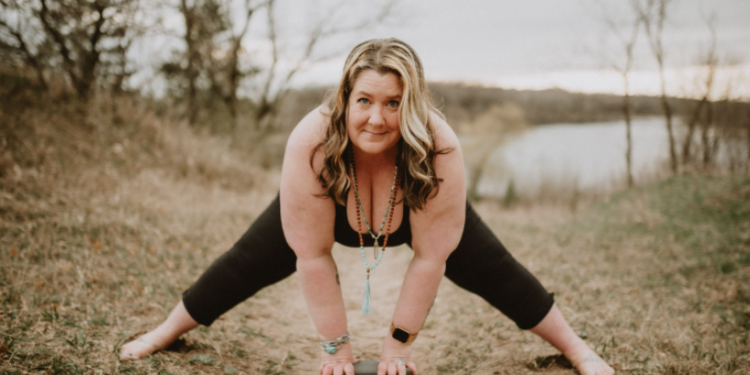by Amy Zellmer, Editor-in-chief
Yoga is a powerful tool for recovery after brain injury. Contrary to some beliefs, everyone can do yoga — you don’t need to be super flexible, be able to balance, or even be able to stand up. The beauty of yoga is that every pose can be modified to accommodate anyone.
An important aspect of yoga is your breath. Connecting your breath to your body and flow and getting oxygen flowing to your brain make yoga powerful for recovery. Yoga is also a time to quiet the mind and let anxiety and distracting thoughts drift away.
The wide-legged forward fold (Prasarita Padottanasana I) helps strengthen and stretch your inner thighs, the backs of your legs, and your spine. The pose helps calm your brain and relieves mild backaches. This forward fold can help boost confidence and reduce depression.
Instructions:
- Stand with your legs anywhere from three-to-four feet apart (taller people may need to step wider), making sure your inner feet are parallel to each other. Engage the thigh muscles and inhale, lifting your chest. Rest your hands on your hips.
- Exhale as you lean forward from the hip joints. As your torso becomes parallel to the floor, press your fingertips onto the floor below your shoulders. Bring your head up, keeping your neck long and your gaze forward.
- Take a few breaths here as you keep your thighs engaged.
- While you inhale, rest your hands on your hips, pull your tail bone to toward the floor, and bring your torso up. Bring your feet back together.
Modifications:
– You can bring your hands to a block or chair if you can’t handle the inversion.
Join me for monthly yoga classes via zoom for only $10 a month: www.patreon.com/amyzellmer











